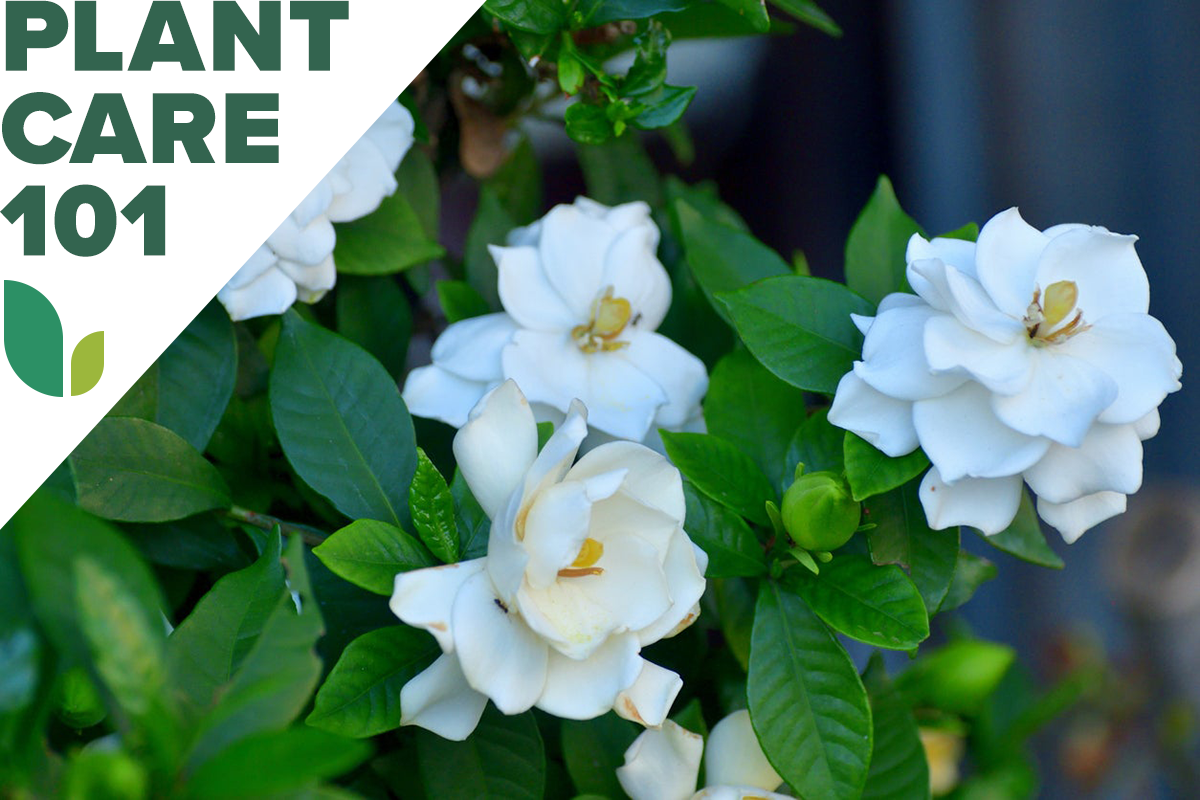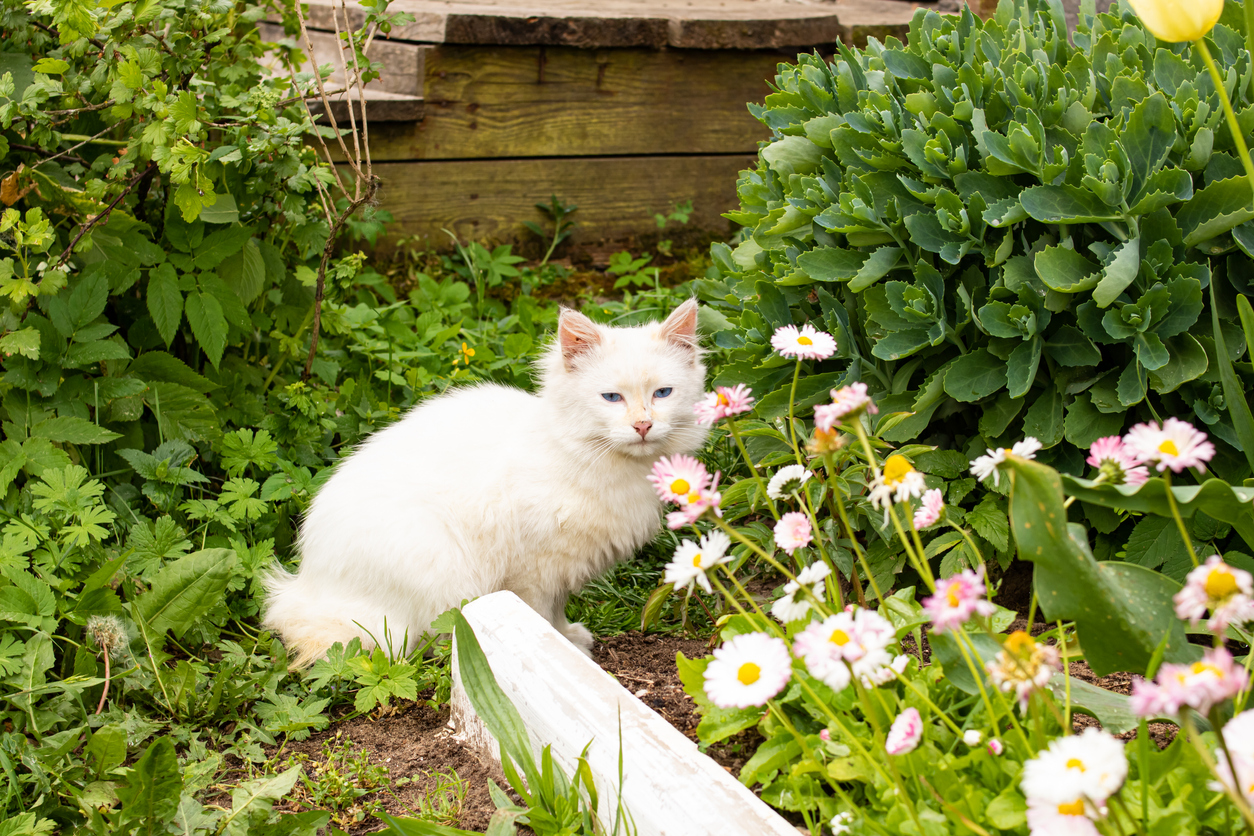

We may earn revenue from the products available on this page and participate in affiliate programs. Learn More ›
Often considered the temperamental diva of the plant world, the gardenia plant can thrive outdoors in Southern states, but it tends to be hard to grow indoors. If its needs are all met, the shrub produces waxy, aromatic white or yellow blooms during late spring and early summer.
If a gardenia isn’t happy, though, you may be in for a yellowing plant that flings unopened buds in every direction. However, there are tried-and-true tips on gardenia care that will help you indulge this diva and keep it producing perfumed posies.
Growing Gardenia at a Glance
Common Name: Gardenia
Scientific Name: Gardenia jasminoides
Hardiness Zones: USDA Zones 6 to 11
Soil: Acidic, pH 5 to 6
Light: Full, partial, or indirect sun
Water: High
Food: Acidic azalea plant food
Propagation: Tip cuttings
Safety: Toxic to pets and livestock
Gardenia Characteristics
Although there are more than 200 species of gardenias, most of the types grown by gardeners are cape jasmine (Gardenia jasminoides) cultivars, which are sometimes grafted onto the single-flowered Gardenia thunbergia rootstock for its nematode resistance.
Originating in East Asia, Gardenia jasminoides is hardy in USDA Zones 8 to 11. That said, some cultivars are advertised as being hardy to Zone 7, and a few even to Zone 6 if well protected during winter.
Ground cover gardenia types often reach heights of only 1 to 2 feet, while a full-grown gardenia tree might stand 8 feet tall. They typically produce glossy, green leaves 3 to 5 inches long and waxy, fragrant single or double white or yellow blooms 2 to 5 inches in diameter. Those may occasionally be followed by ½- to 1½-inch seed pods resembling orange capsules.

Recommended Gardenia Varieties
The following common Gardenia jasminoides cultivars offer some variety in terms of heights and growing zones.
- Aurea: Also known as “yellow gardenia,” this type grows up to 3 feet tall and produces double flowers that open white but mature to dark yellow in Zones 8 through 10.
- Belmont: This classic upright gardenia, patented in 1935, may reach a height of 8 feet. It’s one of the best blooming types, making plenty of 4-inch double white flowers in Zones 7 through 10.
- Crown Jewel: Among the hardiest gardenia varieties, this jewel grows up to 3 feet tall and boasts double white blooms. It can survive as far north as Zone 6—with protection—and as far south as Zone 11.
- Aimee (First Love): Boasting some of the largest blooms in the genus, this cultivar grows up to 8 feet tall with 5-inch double white flowers in Zones 8 through 11.
- Fragrant Pathways: Low enough to line paths, this ground cover type generally doesn’t surpass 2 feet in height and has narrow leaves and double white blooms. It’s hardy in Zones 7 through 10.
Planting Gardenias
Due to their preference for high humidity, gardenias seldom thrive in desert climates, nor will they grow well in saline soils.
When is the best time to plant gardenias?
In Zones 8 through 11, set out your gardenia in autumn about 6 weeks before the usual date of your first fall frost. In Zones 6 or 7, plant it in spring after the danger of frost has passed to allow it several months to get established before cold weather sets in again.
Where can gardenias grow?
Select a location in well-draining acidic soil, with a pH between 5 and 6. To meet gardenia light requirements, choose a position in full sun in areas where summers are cool. In hotter climates, plant the gardenia where it will receive morning sun and afternoon shade or bright, indirect light. Avoid heavy shade, however, or you might never see a gardenia flower bloom on your plant.
How do you plant gardenias?
For the best results select a plant that isn’t yet rootbound, since gardenia resents disturbance of its roots.
- Make your planting hole twice as wide as the shrub’s root ball and a little deeper than that root ball is, and then backfill an inch or two with loose soil.
- Ease the plant from its pot and place it in the hole so that the top of its root ball protrudes about 1 inch above the soil line, filling in the evacuated soil around it.
- If you are setting out more than one bush in your gardenia garden, space them 5 to 6 feet apart.
- Water the plant(s) well and mulch it with 3 inches of pine straw or another acidic mulch.

Can you grow gardenias in containers?
When growing gardenias in pots, choose 2- to 5-gallon containers that are 9 to 12 inches in diameter. Ensure that they have drainage holes and fill them with an acidic mix such as two parts potting mix combined with one part peat moss. Once a potted gardenia has developed buds, avoid moving it, since a change in conditions can cause a nearly blooming gardenia to drop everything!
Watering Gardenias
The soil in which your gardenia is planted should be light, drain well, and retain enough moisture that it can stay damp at all times without ever becoming soggy. The previously mentioned mulch should help it maintain that dampness. However, during periods of dry weather, you might need to water your gardenia, preferably with a soaker hose to avoid spattering its leaves. Make sure that it receives the equivalent of 1 inch of water per week from rain or irrigation.
Fertilizing Gardenias
The best plant food for gardenia is an organic type for acid-loving plants such as 3-4-3. Apply it in spring after the danger of frost has passed, using 1 cup of gardenia fertilizer for every foot in diameter of your shrub’s dripline and scratching it into the soil. (The dripline is the outer circumference of the plant.) Feed the gardenia once more about 6 weeks later, but avoid feeding it in late summer or autumn, as that will encourage soft new growth which is easily damaged by frost.
Pruning Gardenias
Outdoor gardenias don’t require much pruning unless you want to snip off fading flowers to encourage the shrub to keep blooming. If you intend to cut the bush back to a smaller size or remove dead or dying branches, do that in midsummer just after it has finished blooming. Avoid any pruning in autumn or you might cut off all the buds for the following year’s blooms, though some gardenias flower on both old and new wood.
Propagating Gardenias
To propagate gardenia, fill a pot with a mix of half peat moss and half perlite. Then take 4- to 6-inch tip cuttings during the summer from wood that’s no more than about 2 months old.
Remove all the leaves on the lower half of a cutting before dipping its base in rooting hormone and inserting that base 1 to 2 inches deep in the mix. When you have all the cuttings potted, place an inverted plastic bag loosely over the pot and support it with drinking straws. Keep the pot in a warm area with bright indirect light until the cuttings root.

Safety Considerations
The ASPCA warns that consumption of gardenia’s foliage or flowers can cause vomiting, diarrhea, and hives in pets and some livestock. So keep the shrub away from pastures, and consider doing without it if your pets tend to gravitate to new greenery. Alternatively, you might want to purchase a potted gardenia and hang it high so it’s out of animals’ reach.
Potential Pests and Diseases
In overly alkaline soil, gardenias frequently suffer from iron chlorosis, which causes yellowing between the veins of the leaves while the veins remain green. If it isn’t possible for you to change the pH of your soil, you might need to apply iron chelate drenches or sprays at least once per year.
The sooty black mold that sometimes coats gardenia plants feeds on the “honeydew” left behind by insects feeding on the foliage. Although the mold wipes off easily enough, to prevent it, you will need to get rid of the insects—such as whiteflies—with insecticidal oils or soaps.
Overwintering Gardenia
The gardenia is a perennial in warmer zones and can become a winter houseplant in cooler regions. If you move your gardenia indoors over winter, expect it to drop at least some of its foliage in protest since this plant doesn’t like change.
When is the best time to bring gardenias indoors?
Bring a potted gardenia indoors before your first frost, or even before the hint of frost. Bringing the plant inside before the heater starts for the winter will ensure that the indoor air isn’t as dry as it will be later, providing a less drastic change in conditions for the plant.
How do you overwinter gardenias?
For indoor gardenia care, find a location for the houseplant where the temperature remains between 70 and 75 degrees Fahrenheit during the day and drops down to 60 to 64 degrees at night.
- Place it atop a humidity tray on an east-facing windowsill where it will receive sun during the morning but not at midday.
- Water the gardenia with rainwater if possible to avoid raising its soil’s pH, with the soil remaining lightly damp at all times.
- To keep the plant’s leaves glossy, polish them occasionally by spraying them with vegetable oil.
Looking for more plants with fragrant blooms? Check out our guides on growing daffodils, roses, and wisterias.
